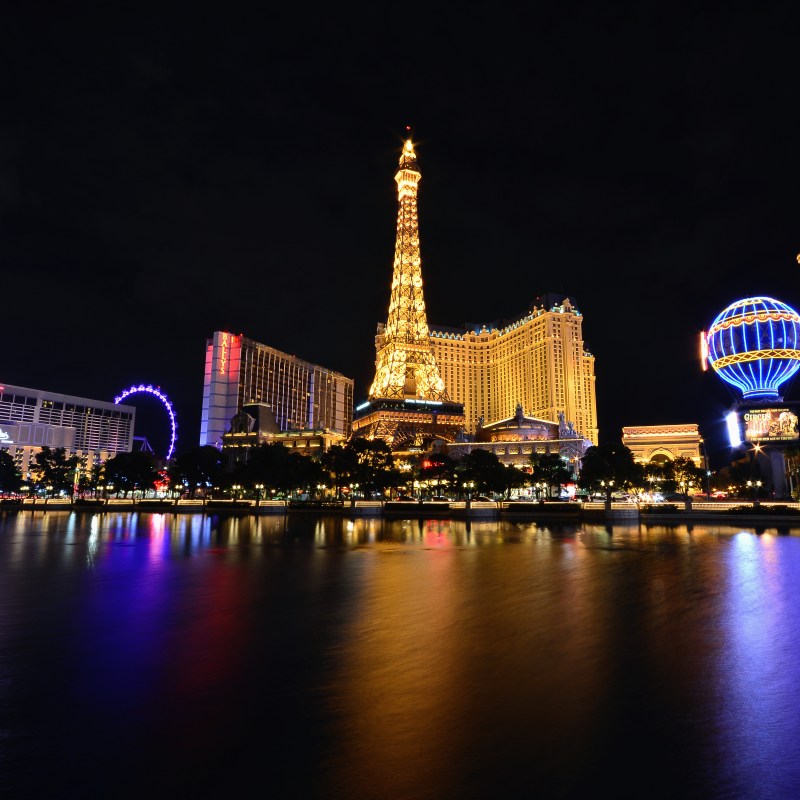
Las Vegas has evolved quite a bit in the last two decades.
Videos by TravelAwaits
The city has flipped from a casino-centric desert oasis where anything goes to a more family-friendly, all-out entertainment destination. Along with gambling and nightlife, the Strip has pivoted to offer plenty in the way of luxury shopping, spas, entertainment, and even outdoor activities.
In short, Las Vegas isn’t the casino hub it once was.
That being said, the Strip remains one of the most iconic stretches in the United States—and it’s largely occupied by those iconic and larger-than-life casino-resorts. From the Bellagio to Caesars Palace to Luxor, the skyline is littered with famous brands and their multi-story casinos.
But how many can you actually name? And, if you had the chance to spend a weekend gambling at one, which would you choose?
Let’s dig into the history and reputation of the most famous casinos on the Strip in Vegas. First up: one of my favorite history lessons.
Famous casinos on the Strip: meet Kirk
The Vegas Strip first popped up in the 1940s and ‘50s. During that time, a casino magnate from Galveston, Texas, was looking to hit it big in the desert by attracting Hollywood bigwigs. So was Bugsy Siegel, a famed gangster from the mid-century. For two decades, casino ideas were fomenting in the Vegas area.
During that same period, a first-generation Armenian immigrant named Kirk Kerkorian conceived a slightly insane and slightly genius idea during WWII. Using his limited piloting experience, he proposed a shortened northern route that would let him deliver American supplies to the troops across the Atlantic even faster.
A local pilot liked the idea and lent Kerkorian his plane. Kerkorian’s idea paid off, and his northern route was a success. He flipped that early success into a business venture, eventually raising the funds to buy Trans International Airlines.
And where did he fly from his home in Los Angeles?
To Vegas. Again and again.
By 1969, Kerkorian had the funds to start buying property along the Strip. Eventually, he would buy part of Metro-Goldwyn-Meyer (MGM) Studios in Los Angeles, then start launching casino-resorts in Vegas under the same brand name.
Depending on who you ask, Kerkorian might have been a capitalist genius, a corporate raider, or a compulsive risk-taker.
The most famous casinos on the Strip in chronological order
- Caesars Palace (1966)
- The International Hotel (now Westgate), 1969
- The Mirage (1989)
- Excalibur (1990)
- Luxor (1992)
- MGM Grand (1993)
- Treasure Island (1993)
- Mandalay Bay (1999)
- The Venetian (1999)
- Bellagio (1998)
- Wynn (2005)
The most famous casinos on the Strip in chronological order
Caesars Palace, 1966
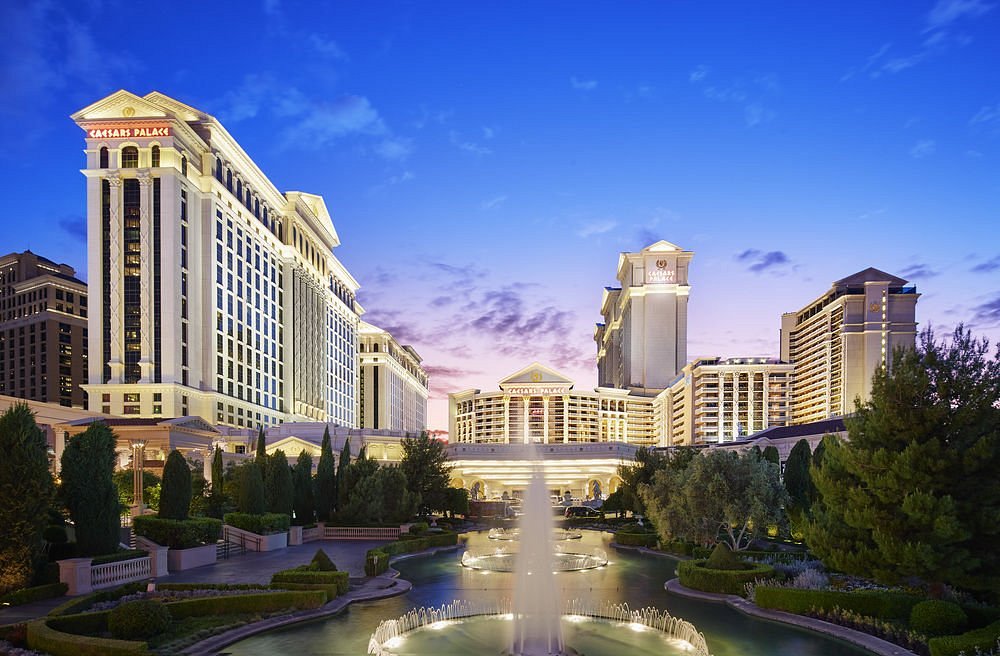
Meet the first casino to launch Las Vegas’s obsession with fine Italian living. The goal in building Caesars Palace was to emulate the opulence of Rome—which aligns well with the casino’s goal of attracting high rollers. You might also know Caesars Palace for its famous performance venue, The Colosseum, or its cameos in famous films like The Hangover, Rocky III, and Ocean’s 11.
The International Hotel (now Westgate), 1969
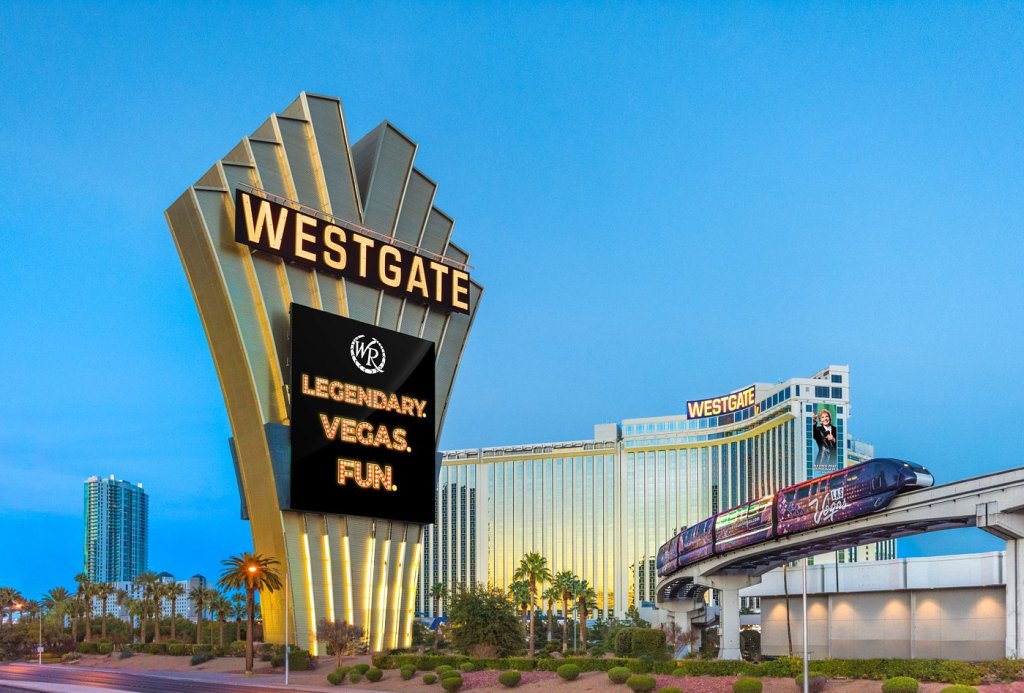
I don’t personally find Westgate that iconic because its plain, white edifice doesn’t stand out on the Strip. (Although it was modeled after the UNESCO Headquarters, which I guess is cool.) However, it was Kerkorian’s first project on the Strip, and some consider it to be the very first mega-resort in the world. You might have seen it in the 2022 Baz Luhrmann Elvis biography.
The Mirage (soon to be the Hard Rock Casino), 1989
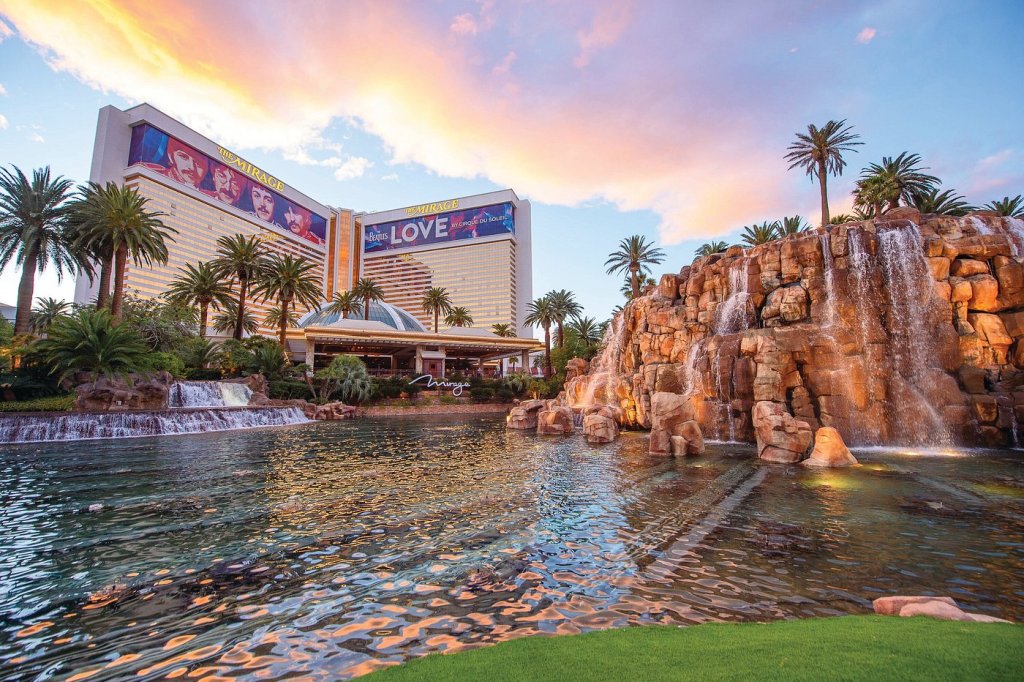
Like I said in the section above, some consider Westgate to be the original mega-resort. However, others agree that The Mirage was the world’s first true mega-resort, which was the world’s largest and most expensive resort when it was completed in 1989.
Its golden design elements are well-known, along with its shows. In 1990, they launched the Siegfried & Roy show—which ran until Horn was maimed by a tiger in 2003. The Mirage also hosted the first Cirque du Soleil show in Vegas in 1992, Nouvelle Experience. In 2022, The Mirage was sold to Hard Rock International; in 2024, it closed its doors for a three-year rebranding project.
Excalibur (1990)
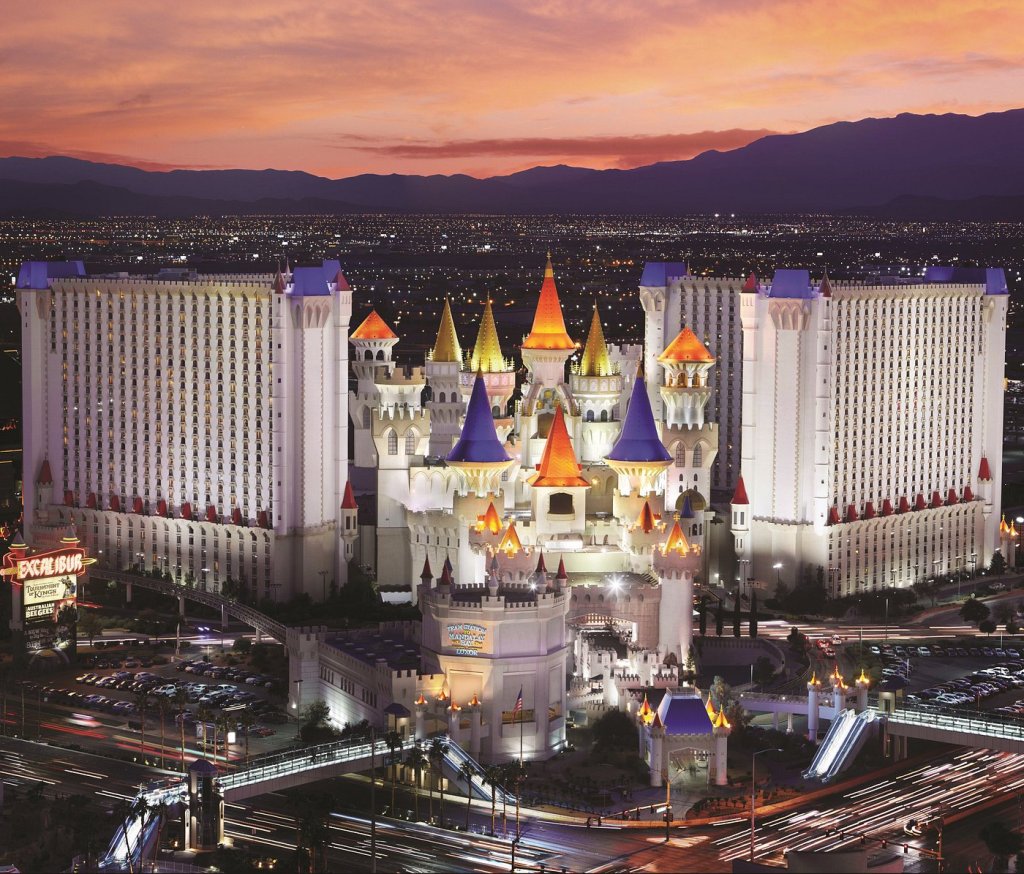
Like something that tumbled out of a child’s toy box, Excalibur mimics King Arthur’s court and is one of the most iconic castle-casinos in the world. While I personally hate how it looks, it’s what’s on the inside that matters—and Excalibur has two Vegas shows that I’m dying to see.
The first is Thunder From Down Under, a male revue show that debuted in 2002 and helped inspire hits like Magic Mike. The second is the Tournament of Kings, a medieval-themed jousting and dinner show.
Luxor (1992)
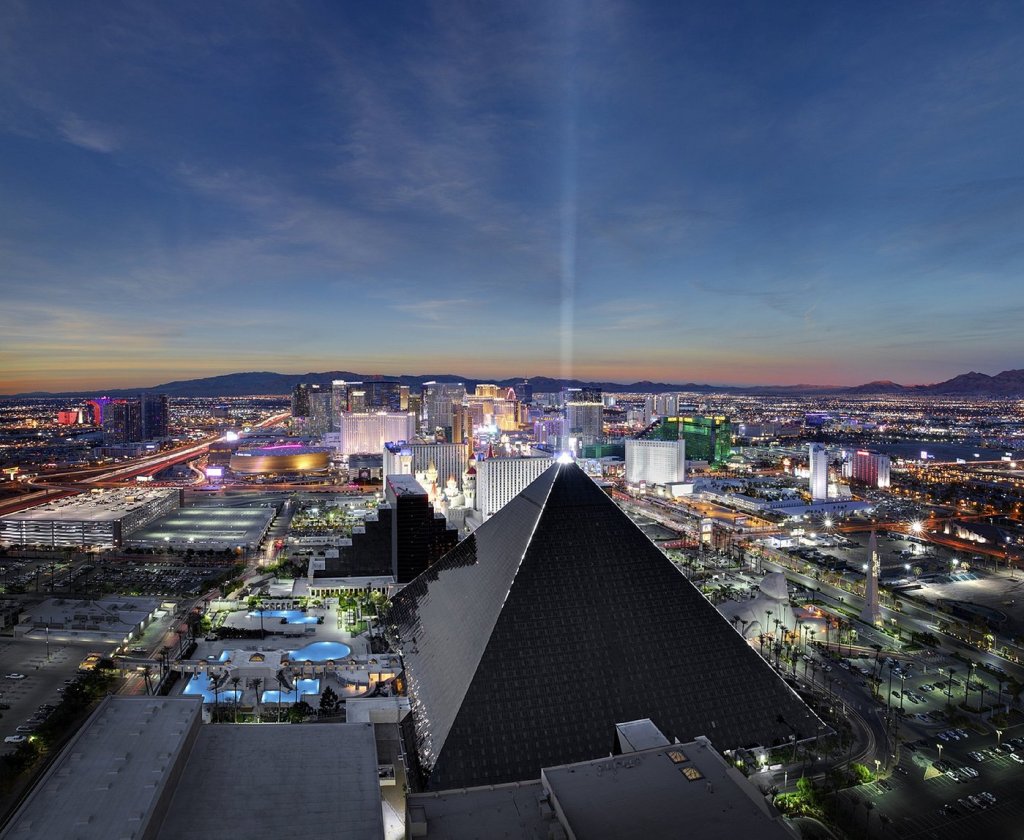
Las Vegas was all about its themed casinos in the 1990s. Following the castle-fortress-casino of Excalibur came Luxor, which is the most identifiable building on the Strip skyline.
The massive pyramid is helmed by a light beam, which is the strongest man-made light in the world. In front sits a replica of the Great Sphinx of Giza, which is actually the entrance into the casino.
Treasure Island (1993)
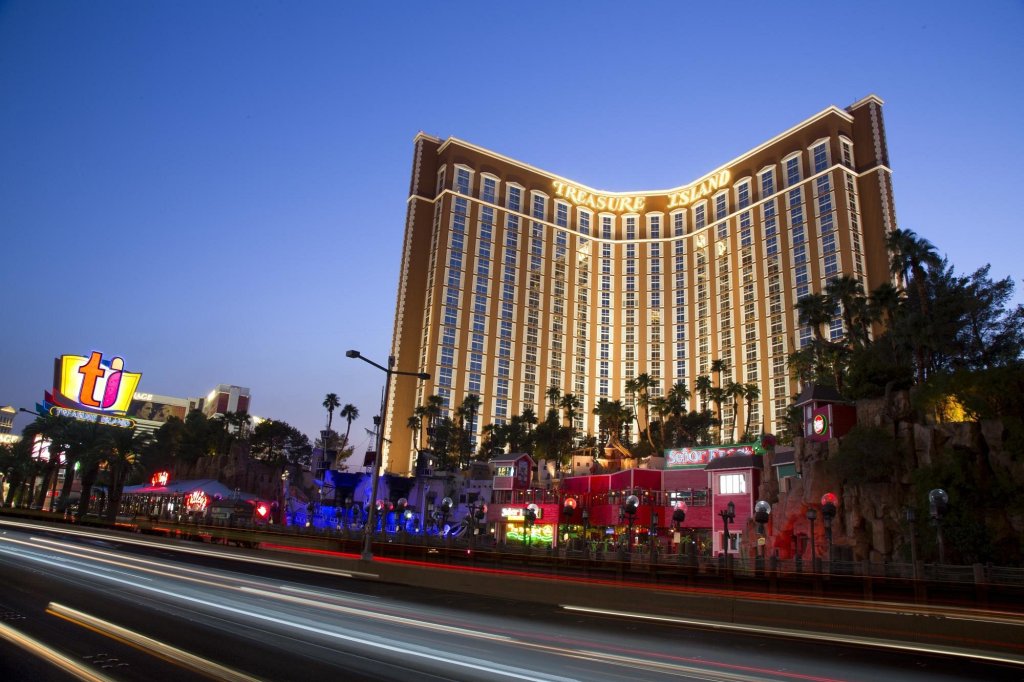
King Arthur’s court, Ancient Egypt, and—the final coup—a pirate-themed casino. Treasure Island quickly became one of the most famous casinos on the Strip thanks to its large lagoons, where fake pirate battles on large ships took place until 2013.
Since then, the casino has shifted to focus on mid-range offers, such as two on-site franchise restaurants, making it one of the most affordable casinos on the Strip.
MGM Grand (1993)
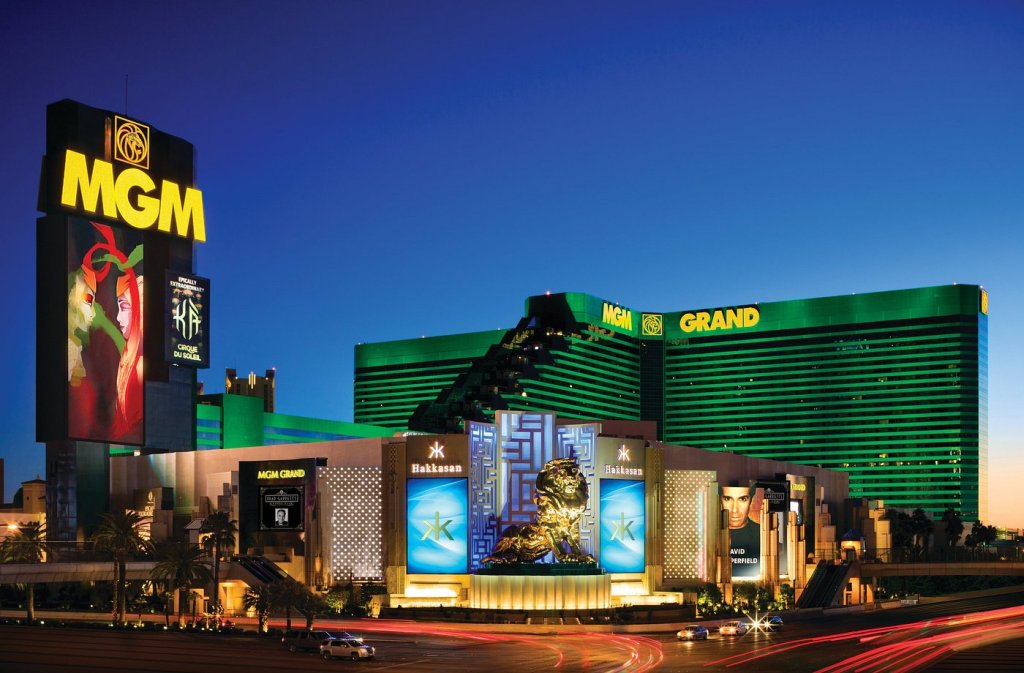
The MGM Grand is the second project of the name from Kerkorian; the original was the MGM Grand Hotel, built in 1973 before being sold to Bally’s in 1986 and then rebranded again in 2022 as Horsehoe Casino.
Just know that this MGM Grand property, built in 1993 and modeled after Oz from The Wizard of Oz, is the more famous of the two.
You might know it for its famous boxing venue, the MGM Grand Garden Arena—famous for hosting title fights. Tupac Shakur famously left a fight at the venue shortly before being gunned down. One year later, in 1997, it was also where the infamous Mike Tyson Bite Fight took place.
Bellagio (1998)
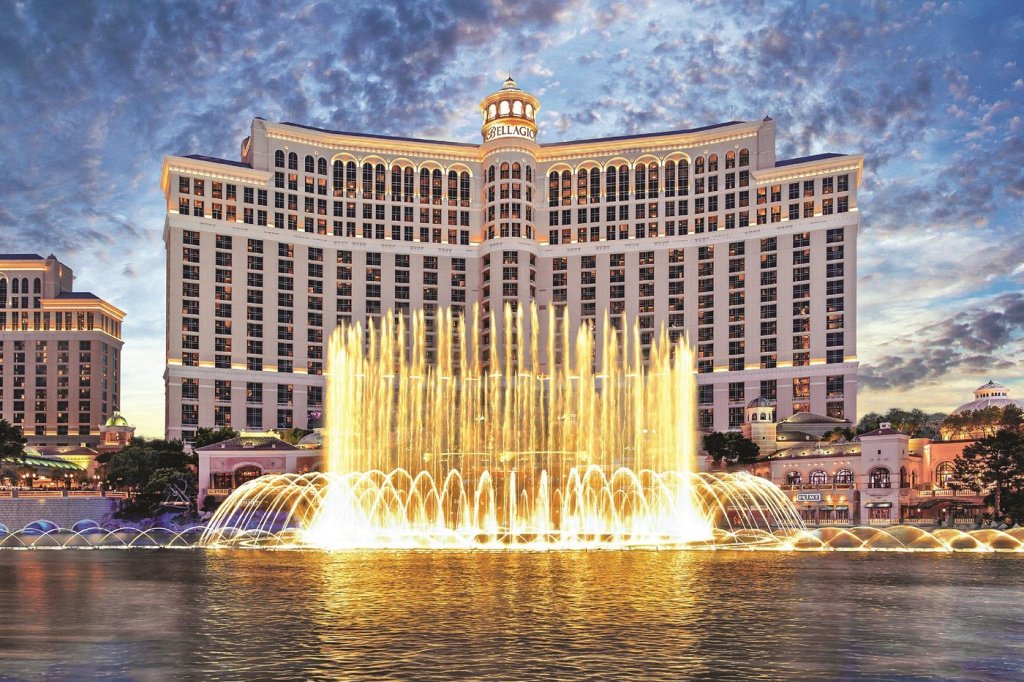
When it comes to famous Italian-inspired casino-resorts, Bellagio is probably the most well-known thanks to its over-the-top, opulent features, designed to mimic the stately villas of Lake Como.
The most iconic is the Fountains of Bellagio, which uses over 1,200 spouts and 4,700 lights to put on a dazzling display. There’s also the famous Dale Chihuly glass piece in the lobby, titled Fiori di Como (the largest glass sculpture in the world), and the on-site art gallery with pieces from Picasso.
Mandalay Bay (1999)
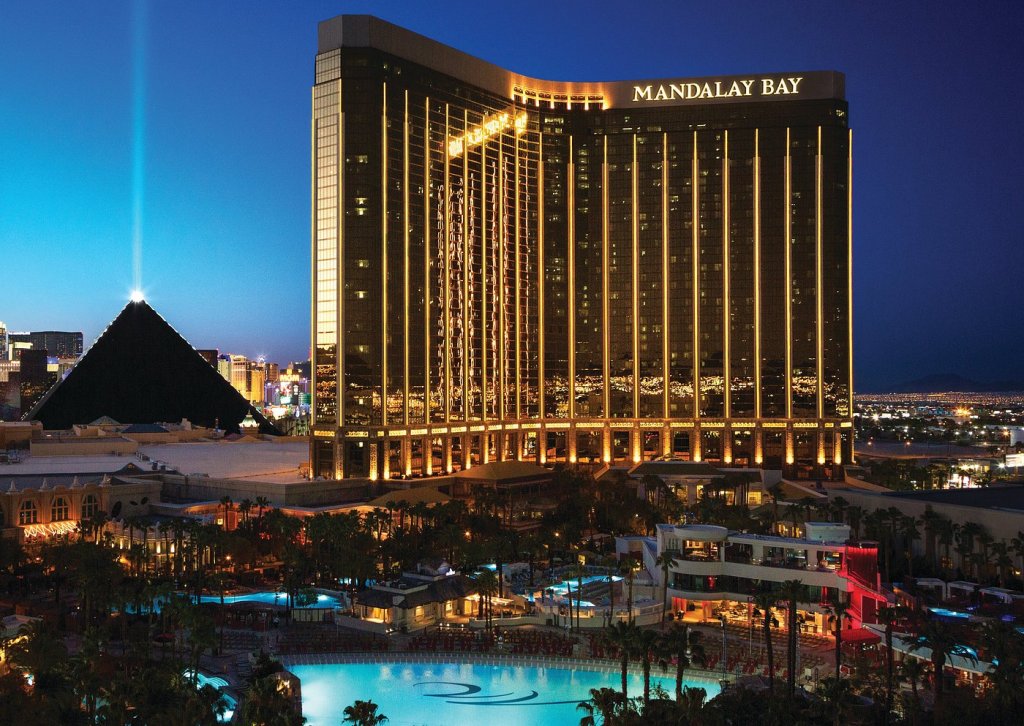
Mandalay Bay, with its iconic gold accents and Polynesian flair, is one of the flashiest luxury hotels on the Strip. It’s also the only place to have a Four Seasons hotel on the grounds, which became Vegas’s first AAA Five Diamond stay when the casino opened. It’s home to a few well-known venues, including an 1,800-seat theatre venue and the famous Shark Reef aquarium attraction.
The Venetian (1999)
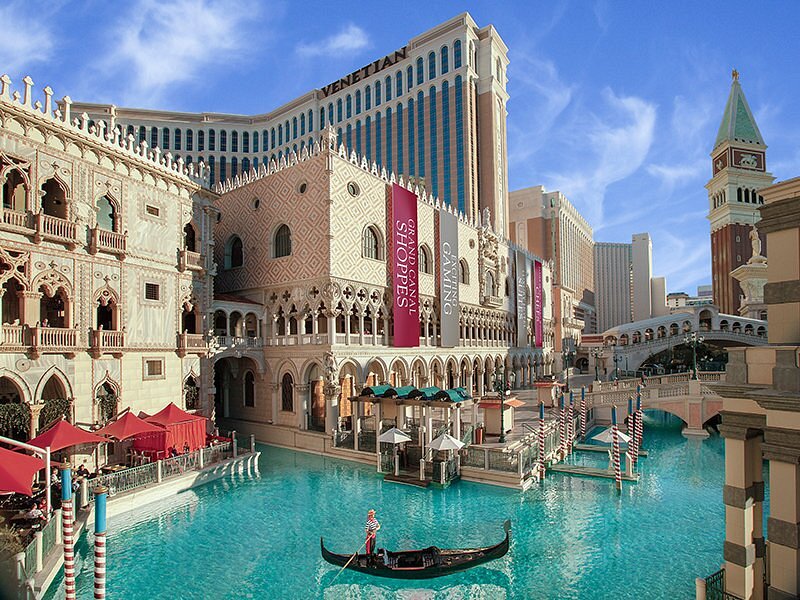
Caesar’s Palace offers a historic Roman theme, while Bellagio is all about opulence in the Lombardy province. The Venetian, by contrast, takes you into the classy, slightly mysterious world of Venice thanks to its long, winding canal that’s serviced by gondolas.
Despite all the allure, I have one slightly un-sexy revelation: The Venetian was built for convention-goers more than casino gamblers. Since 2007, it has operated as a sister casino to The Venetian Macao in China.
Wynn (2005)
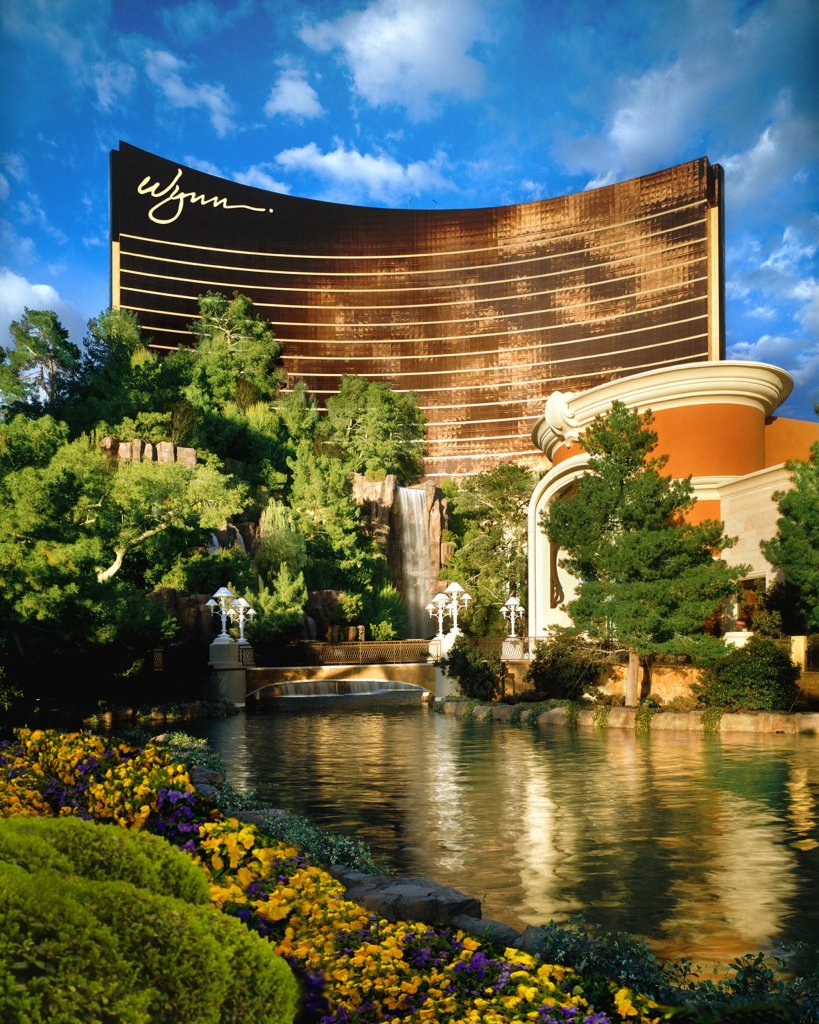
At the start of the article, I introduced you to Kirk Kerkorian—but now is the time to introduce Steve Wynn. He launched a casino and hotel hospitality group, Mirage Resorts, and helped launch operations for casinos like Golden Nugget, The Mirage, Treasure Island, and, in 2005, the Wynn Las Vegas.
The Wynn was his chance to make his mark, introducing a new style of casino-resort. The Wynn is known for its lack of an overarching theme, instead opting for more modern and classic motifs, attractions, and venues. It’s also known for its upscale eateries, including a Michelin-star restaurant.

